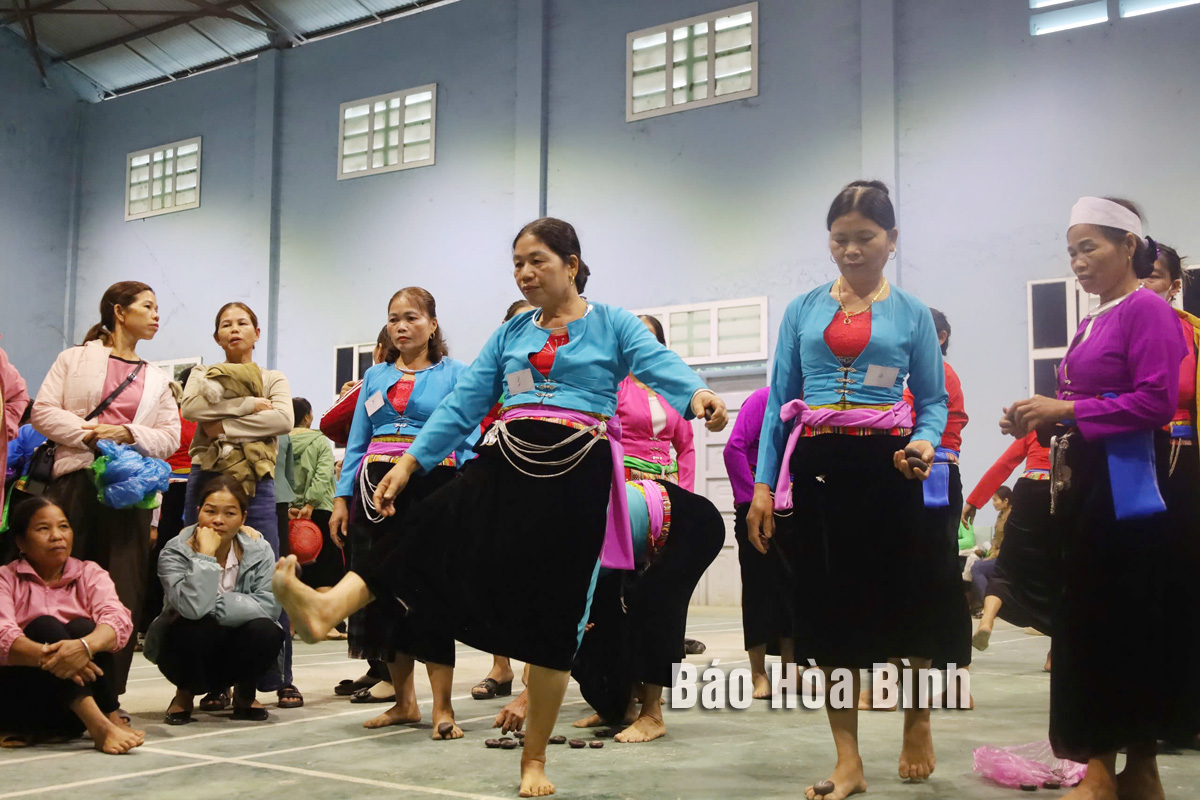
Within the framework of Project 6 on preserving and promoting the fine traditional cultural values of ethnic minorities associated with tourism development, Lac Son district of Hoa Binh province organised a training programme and experimental competition of "danh mang” – a folk game played by the Muong ethnic group during their festivals – on November 26-27.

Female teams compete
in traditional "danh mang” game.
"Danh mang” is a unique sport and traditional folk game with
local cultural significance, with people trying to bring "mang” seeds into
holes. It is currently preserved and re-enacted by Lac Son district through
various initiatives.
The training programme attracted the participation of 24 teams
with 240 members from 24 localities. Participants were equipped with basic
skills, and knowledge on the history and unique characteristics of the game.
They then competed in the team and women categories,
following all eight steps of the game.
Based on the scores, the team of Vu Ban town came first. It was followed
by those from Tan My and Tuan Dao communes.
With an increasingly vibrant and widespread emulation movement aimed at building cultured residential areas and cultured families, Yen Thuy District has been making steady progress toward improving both the material and spiritual well-being of its people, while fostering a civilized, prosperous, beautiful, and progressive community.
Once lacking recreational spaces and community facilities, Residential Group 2 in Quynh Lam Ward (Hoa Binh City) has recently received attention for the construction of a new, spacious, and fully equipped cultural house. The project followed the model of state support combined with public contributions in both labor and funding.
The "All people unite to build cultural life" movement, which has been effectively integrated with Kim Boi district’s socio-economic development goals, is fostering a lively spirit of emulation across local residential areas, hamlets, villages, public agencies, and enterprises. In addition, through the initiative, traditional cultural values are being preserved and promoted, while community solidarity and mutual support in poverty reduction and economic development are being strengthened.
A working delegation of the Hoa Binh provincial People’s Committee led by its Permanent Vice Chairman Nguyen Van Toan on June 11 inspected the progress of a project to build the Mo Muong Cultural Heritage Conservation Space linked to tourism services in Hop Phong commune, Cao Phong district.
Born and growing in the heroic land of Muong Dong, Dinh Thi Kieu Dung, a resident in Bo town of Kim Boi district, in her childhood was nurtured by the sweet lullabies of her grandmother and mother. These melodies deeply imprinted on her soul, becoming an inseparable part of her love for her ethnic group's culture. For over 20 years, this love for her hometown has driven Dung to research, collect, and pass down the cultural values of the Muong people to future generations.
In the final days of May, the Ethnic Art Troupe of Hoa Binh Province organized performances to serve the people in remote, mountainous, and particularly disadvantaged areas within the province. These were not just ordinary artistic shows, but they were the meaningful journeys aimed at spreading cultural values, enhancing the spiritual life of the people and contributing to the preservation of ethnic minority cultural identities.



